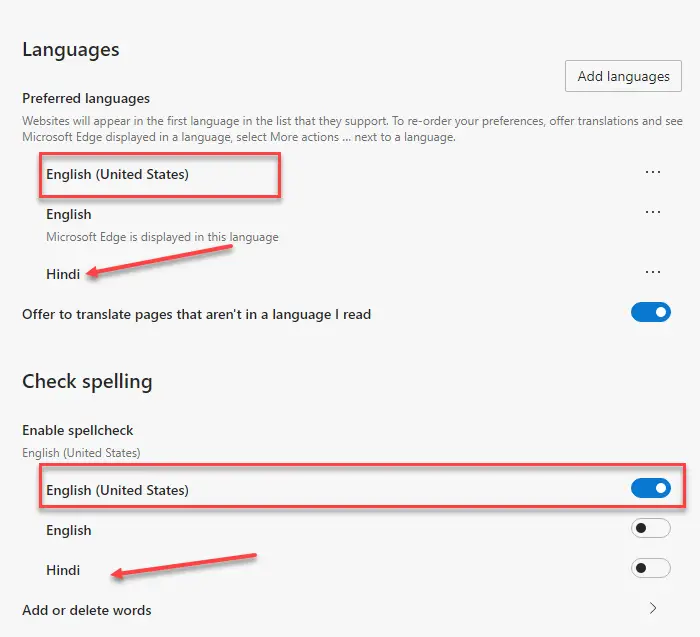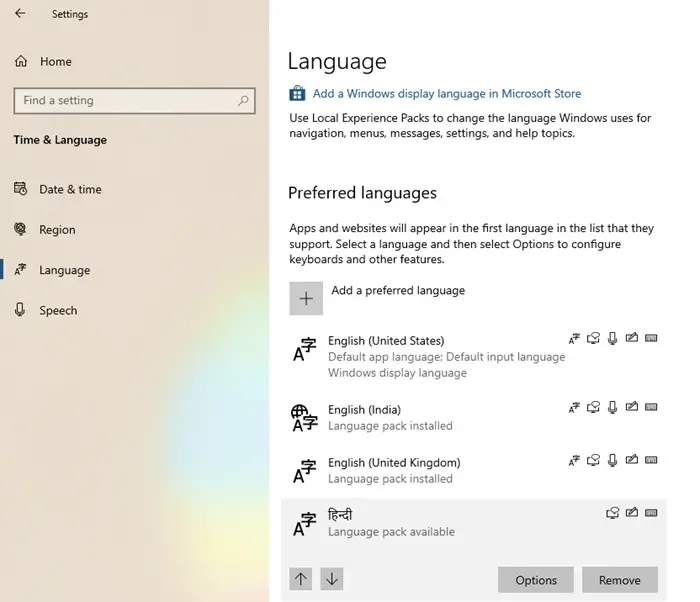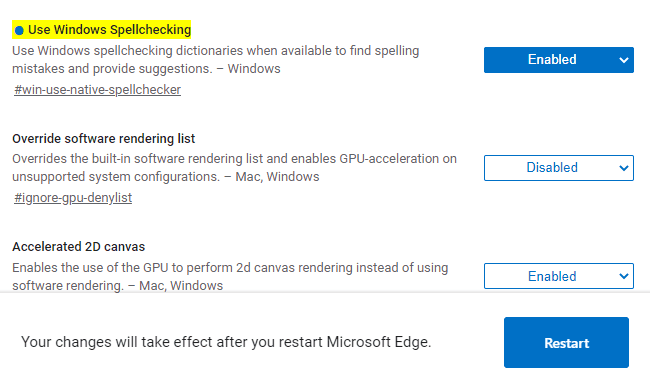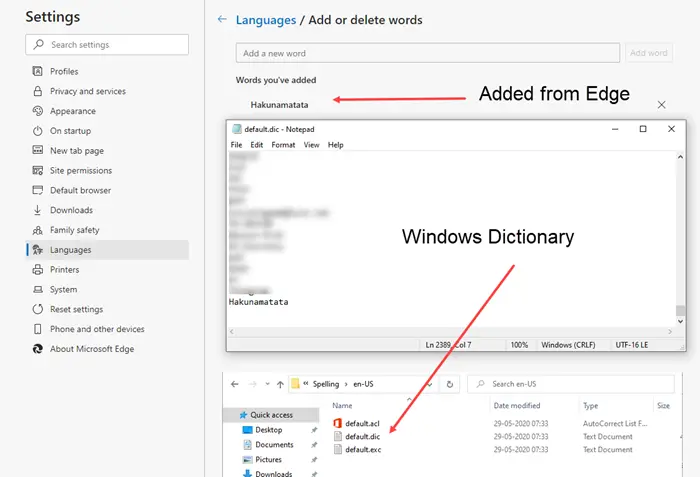One of the most annoying parts of editing using any browser is the spell check. I have noticed that suggestions offered by them are sometimes confusing. For example, a URL is not a spelling mistake, but the open-source proofing tool available in Edge or Chrome does that. Microsoft Edge is changing this annoyance by switching to Windows Spellcheck.
Microsoft Edge or all Chromium browsers now supports Windows Spellcheck. Any word added to the custom dictionary of Windows 10 will be available in the browser.
Enable Windows Spell Check in Microsoft Edge
Windows Spellcheck is not new. The suggestion that shows up in Microsoft products like Microsoft Word is because of Windows Spellcheck. It has been there since Windows 8.1 Switching to native spellchecking provides a variety of advantages such as additional language support, shared custom dictionary, and no more marking of website URL, acronyms, and email addresses.
While Microsoft Edge enables this by default, you can always configure the language settings. Click on the three-dot menu on the top right of Microsoft Edge, and then Settings from the menu. Click on Languages, and notice the Check Spelling section.
Enable the spell check by toggling on the for the respective language. Edge will automatically enable it for the default language. If you wish to allow for additional languages, you can first add them under the languages section of Edge, and then toggle on spell check for that language.

You should also install the same language in Windows to ensure you are taking full advantage of the Windows Spellcheck native integration.
Navigate to Windows Settings > Time and Language > Add a preferred language.
Edge will use the default spell checker available for Chromium if the necessary language pack is unavailable.

It is interesting to know that this feature is a result of a collaboration between Google and Microsoft engineers in the Chromium project. The credit goes to Guillaume Jenkins and Rouslan Solomakhin (Google), and Bruce Long, Luis Sanchez Padilla, and Siye Liu (Microsoft) for getting this done. That said, this feature will be enabled for Chrome as well or any other browser which is using Chromium.
Enable Windows SpellChecker in Microsoft Edge using Flag
To enable this feature in the Edge browser, follow the given suggestions:
Open the Microsoft Edge browser.
Once it opens, go to the address bar and type the below commands –
edge://flags/#win-use-native-spellchecker
Press the Enter key to make the flag appear on the screen.
It appears with the description –
Use Windows spellchecking dictionaries when available to find spelling mistakes and provide suggestions.
As the flag comes with the Default mode, so to make it enable, click on the drop-down menu and select Enabled.

Also, click on the Restart button to take effect the changes you made.
How is the Windows Custom Dictionary supported?
It is essential that we talk about this and how it works. Microsoft Edge and Windows Custom Dictionary are shared. If you add a word using Edge, then it will be included in the Windows Custom Dictionary.
You can manually check if the word was included by opening the default.dic file located at %appdata%\Microsoft\Spelling.
While the words you add from outside Edge is not visible, but they will be an exception from spellcheck. Any word you add from Edge can be removed from Edge. The same will apply to all Chromium browsers.

If you work on Windows most of the time dealing with documents, and editing, this will be super useful.
Windows users will no longer have to maintain or import custom words to the browser. Windows.
Also read: How to Turn on Spell Checker in Google Chrome.